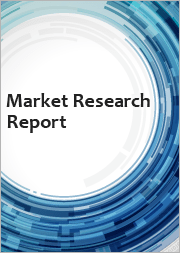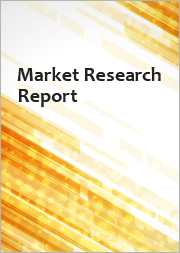
|
시장보고서
상품코드
1582645
IDC FutureScape : 세계의 헬스케어 산업 예측(2025년)IDC FutureScape: Worldwide Healthcare Industry 2025 Predictions |
||||||
이 IDC 조사는 전 세계 경영진에게 미래의 헬스케어 산업 시나리오에 대한 실용적인 인사이트와 분석을 제공합니다. "헬스케어 산업은 장기적으로 환자 치료를 재정의할 준비가 되어 있는 기술 시대의 최전선에 서 있지만, 이러한 변화에는 도전과제가 없는 것은 아닙니다."라고 무타즈 셰게위(Mutaz Shegewi) IDC 헬스 인사이트(IDC Health Insights) 선임 리서치 디렉터는 말했습니다. 또한 "앞으로 헬스케어 조직은 최첨단 AI와 GenAI를 수용하는 것뿐만 아니라, 규제 문제를 극복하고, 기술에 대한 신뢰를 구축하며, 데이터를 지속적으로 보호하고, 미래의 비전을 진화하는 치료 및 상환 모델에 원활하게 통합해야 하는 과제를 안고 있습니다. 성공적인 기업들은 그 과정에서 책임감 있는 인간 중심의 AI 관행을 적극적으로 우선순위에 두고, 기술뿐만 아니라 변화에 적응하고 지지하는 직원들의 역량에 지속적으로 투자할 것입니다."라고 덧붙였습니다.
IDC FutureScape 도표
주요 요약
IDC FutureScape 전망
- 외부 요인 개요
- 예측 : 기술 구매자에게 미치는 영향
- 예측 1 : 2026년까지 헬스케어 GenAI에 대한 투자는 사용 사례의 빠른 전개, 보다 엄선된 임상 데이터, 조직적 동의 증가로 인해 3배 증가할 것입니다.
- 관련 촉진요인
- IT 임팩트
- 환자에게 미치는 영향
- 가이던스
- 예측 2 : 2027년까지 헬스케어 GenAI 이니셔티브의 75%는 데이터 신뢰성, 워크플로우의 단절, 최종사용자 저항 등의 도입 장벽으로 인해 기대했던 혜택을 얻지 못할 것입니다.
- 관련 촉진요인
- IT 임팩트
- 환자에게 미치는 영향
- 가이던스
- 예측 3 : 2027년까지 사이버 보안 위험의 증가로 인해 헬스케어 조직의 40%가 AI 기반 위협 인텔리전스 솔루션을 도입하여 치료의 연속성을 보장하고 환자를 보호하게 될 것입니다.
- 관련 촉진요인
- IT 임팩트
- 환자에게 미치는 영향
- 가이던스
- 예측 4 : 2027년까지 헬스케어 산업은 지능형 자동화를 통해 임상, 운영 및 관리 워크플로우를 크게 최적화하여 최대 3,820억 달러를 절약할 것입니다.
- 관련 촉진요인
- IT 임팩트
- 환자에게 미치는 영향
- 가이던스
- 예측 5 : 2027년까지 환자의 40%가 다년 상환 모델에 등록할 것으로 예상됨에 따라 맞춤형 장기 치료 모델에 대한 지불 연결을 지원하는 장기적인 인프라 투자가 필요할 것입니다.
- 관련 촉진요인
- IT 임팩트
- 환자에게 미치는 영향
- 가이던스
- 예측 6 : 2028년까지 환자의 80%가 하이브리드 케어에 대한 수요 증가로 인해 의료 서비스 연계 강화, 의사와 소비자의 접근성 확대, 디지털 리터러시 향상으로 인해 하이브리드 케어를 이용하게 될 것입니다.
- 관련 촉진요인
- IT 임팩트
- 환자에게 미치는 영향
- 가이던스
- 예측 7 : 2029년까지 AI 기반 공중보건 3.0 이니셔티브가 정책 수립, 실행 및 자원 동원을 가속화하여 지역사회 참여와 프로그램 적용 범위가 50% 확대될 것입니다.
- 관련 촉진요인
- IT 임팩트
- 환자에게 미치는 영향
- 가이던스
- 예측 8 : 2029년까지 AI를 활용한 조기 발견 프로그램에 대한 헬스케어 투자가 3배로 증가하여 암과 신경 질환을 중심으로 한 비감염성 질환의 '다음 유행병'에 대응할 것입니다.
- 관련 촉진요인
- IT 임팩트
- 환자에게 미치는 영향
- 가이던스
- 예측 9 : 2029년까지 주요 의료 기관은 환자 디지털 트윈 도입을 60% 확대하여 의료 교육 혁신, 임상 비용 효율성 향상, 보다 안전한 개별 치료 프로토콜을 촉진할 것입니다.
- 관련 촉진요인
- IT 임팩트
- 환자에게 미치는 영향
- 가이던스
- 예측 10 : 2029년까지 세계 최고 수준의 병원에서 시행되는 복잡하고 많은 양의 수술 중 50% 이상에서 AI 기반 실시간 안내, 촉각 피드백, 고급 분석이 사용되어 수술 합병증이 60% 감소할 것으로 예상됩니다.
- 관련 촉진요인
- IT 임팩트
- 환자에게 미치는 영향
- 가이던스
- 예측 1 : 2026년까지 헬스케어 GenAI에 대한 투자는 사용 사례의 빠른 전개, 보다 엄선된 임상 데이터, 조직적 동의 증가로 인해 3배 증가할 것입니다.
기술 구매자에게 드리는 조언
외부 촉진요인 : 상세히
- AI 기반 비즈니스 모델 - AI 실험에서 수익 창출로의 전환
- 자동화를 향한 추진력 - 데이터 중심의 미래를 향하여
- 규제의 유동성 - 변화하는 정책 환경에서의 컴플라이언스 과제에 대응하기 위한 규제 유동성
- 확장되는 디지털 보안의 경계 - 늘어나는 위협에 대한 방어
- 책임감 있는 인간 중심 기술 - 기업윤리
- 기술적 부채와의 싸움 - IT 현대화의 장애물 극복하기
- 고객 경험의 제곱 - 디지털 서비스에 대한 소비자와 시민의 기대치
참고 자료
- 관련 조사
- 각주
This IDC study provides executives across the globe with actionable insights and analysis for future healthcare industry scenarios."The healthcare industry is at the forefront of a technological era poised to redefine patient care for the long run, but this transformation is not without its challenges," says Mutaz Shegewi, senior research director at IDC Health Insights. "The future mandates that healthcare organizations not only embrace cutting-edge AI and GenAI but also navigate regulatory challenges, foster trust in the technology, secure their data at all times, and seamlessly integrate their vision for tomorrow into evolving care and reimbursement models. Those that thrive will proactively prioritize responsible, human-centric AI practices throughout the journey and continuously invest not just in technologies but also in their workforce's ability to adapt to and champion change."
IDC FutureScape Figure
Executive Summary
IDC FutureScape Predictions
- Summary of External Drivers
- Predictions: Impact on Technology Buyers
- Prediction 1: By 2026, Healthcare GenAI Investments Will Triple, Driven by Rapid Use Case Deployment, More Curated Clinical Data, and Increased Organizational Buy-In
- Associated Drivers
- IT Impact
- Patient Impact
- Guidance
- Prediction 2: By 2027, 75% of Healthcare GenAI Initiatives Will Fail to Achieve Expected Benefits Due to Barriers to Adoption Like Trustworthiness of the Data, Disconnected Workflows, and End-User Resistance
- Associated Drivers
- IT Impact
- Patient Impact
- Guidance
- Prediction 3: By 2027, Growing Cybersecurity Risks Will Push 40% of Healthcare Organizations to Adopt AI-Based Threat Intelligence Solutions to Ensure Care Continuity and Safeguard Patients
- Associated Drivers
- IT Impact
- Patient Impact
- Guidance
- Prediction 4: By 2027, the Healthcare Industry Will Save up to $382 Billion by Significantly Optimizing Clinical, Operational, and Administrative Workflows Through Intelligent Automation
- Associated Drivers
- IT Impact
- Patient Impact
- Guidance
- Prediction 5: By 2027, 40% of Patients Will Enroll in Multiyear Reimbursement Models That Cause the Need for Long-Term Infrastructure Investment to Support Linking Payment to Customized, Longitudinal Care Models
- Associated Drivers
- IT Impact
- Patient Impact
- Guidance
- Prediction 6: By 2028, Driven by the Demand for Enhanced Care Collaboration, Expanded Clinician and Consumer Access, and Enhanced Digital Literacy, 80% of Patients Will Utilize Hybrid Care
- Associated Drivers
- IT Impact
- Patient Impact
- Guidance
- Prediction 7: By 2029, AI-Driven Public Health 3.0 Initiatives Will Accelerate Policy Planning, Execution, and Resource Mobilization, Expanding Local Community Engagement and Program Coverage by 50%
- Associated Drivers
- IT Impact
- Patient Impact
- Guidance
- Prediction 8: By 2029, Healthcare Investments in AI-Powered Early Detection Programs Will Triple to Fight the "Next Pandemic" of Noncommunicable Diseases, Focusing on Cancer and Neurological Diseases
- Associated Drivers
- IT Impact
- Patient Impact
- Guidance
- Prediction 9: By 2029, Large Healthcare Providers Will Scale the Adoption of Patient Digital Twins by 60% to Transform Medical Education, Enhance Clinical Cost-Effectiveness, and Drive Safer Personalized Care Protocols
- Associated Drivers
- IT Impact
- Patient Impact
- Guidance
- Prediction 10: By 2029, at Least 50% of Complex, High-Volume Surgeries at Top Global Hospitals Will Use AI-Driven, Real-Time Guidance, Haptic Feedback, and Advanced Analytics, Reducing Surgical Complications by 60%
- Associated Drivers
- IT Impact
- Patient Impact
- Guidance
- Prediction 1: By 2026, Healthcare GenAI Investments Will Triple, Driven by Rapid Use Case Deployment, More Curated Clinical Data, and Increased Organizational Buy-In
Advice for Technology Buyers
External Drivers: Detail
- AI-Driven Business Models - Moving from AI Experimentation to Monetization
- The Drive to Automate - Toward a Data-Driven Future
- Regulatory Flux - Navigating Compliance Challenges in a Shifting Policy Landscape
- Expanding Digital Security Frontiers - Fortification Against Multiplying Threats
- Responsible and Human-Centric Technology - Ethics in the Enterprise
- Battling Against Technical Debt - Overcoming Hurdles to IT Modernization
- Customer Experience Squared - Consumer and Citizen Expectations for Digital Services
Learn More
- Related Research
- Endnotes

















